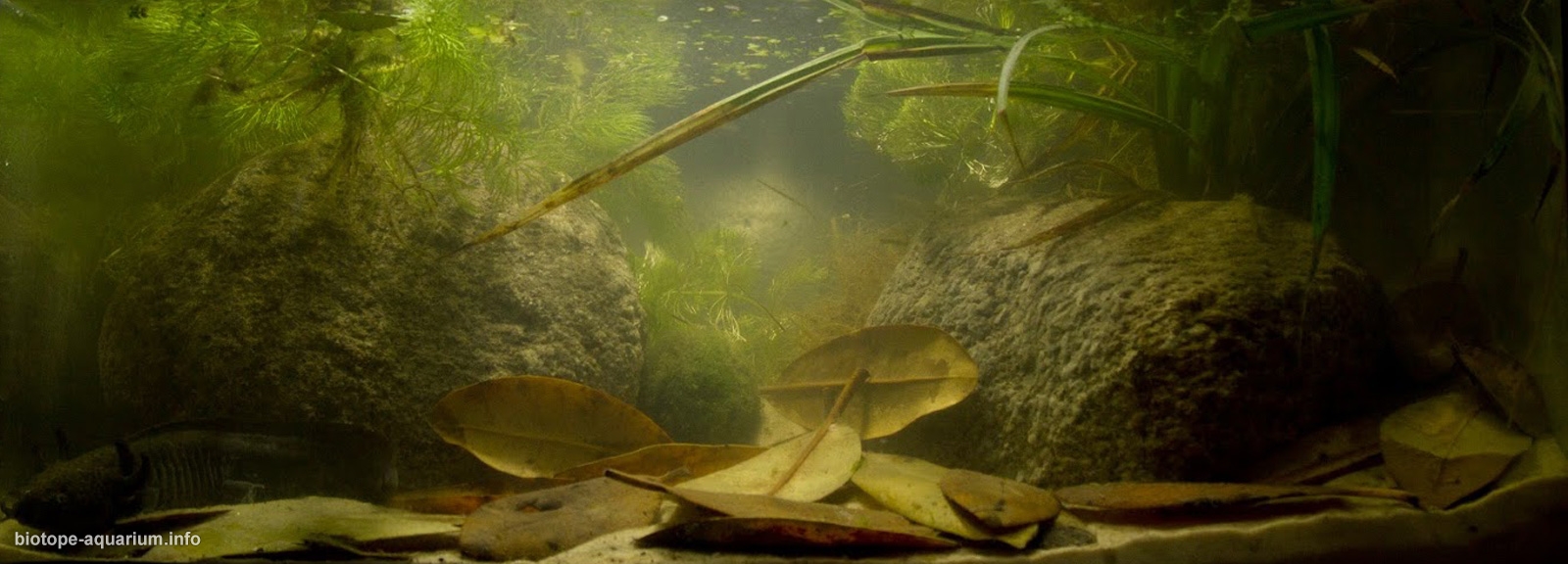Western coast of the former Xico island, the remains of Chalco Lake, Mexico
78th place in Biotope Aquarium Design Contest 2017
![]() Russia. Dmitry Osipov
Russia. Dmitry Osipov

Volume: 54 L
Dimensions: 60x30x30 cm
List of fishes: Ambystoma mexicanum
List of plants: Limnobium laevigatum, Carex paniculata, Ceratophyllum demersum
Description of decorations: UDeco River Light, fraction: 0.1-0.6 mm is perfectly suited to create a dense sandy substrate for the muddy bottom. Plagiogranite stones with a low content of red feldspar inclusions beautifully imitated the white stones of Lake Chalco.
Description of equipment: JBL CristalProfi i60 internal filter, Aquael LEDDY TUBE DECOLIGHT SUNNY 6 W.
Water parameters: Acidity (pH) is 7-8, total hardness (GH) is 6-16° dH, temperature (t) is 20°C.
Description of the area surrounding the biotope: Chalco (Lago de Chalco) is a drainless freshwater lake in the valley of Mexico City. Named after the city of Chalko, which is on its shore. Together with other lakes in the valley (brackish lakes of Texcoco, Zumpango and Xaltocan and freshwater lake Xochimilco) created the ancient lake system of the Mexico basin. Chalko along with Lake Texcoco and Xochimilco were formed when the lava from the Chichinautzin Volcano blocked river flows in the south. This lake played a very important role for many Mesoamerican cultures, including the Toltecs and the Aztecs. The western border of the Chalko Lake was the island of Cuitlahuac, followed by Lake Xochimilco. On the Chalko Lake also the islands of Xico and Mesquic were located. With the beginning of the Spanish colonization, attempts were made to drain the lake to avoid periodic flooding of the adjacent territory. At the moment, Chalko is almost completely drained, with the exception of a small reservoir to the west of the former island of Xico. The current length of the lake is 2.8 km, width is 3.6 km. This, as well as the introduction of invasive commercial fish species into the biotope, only accelerated the process of extinction of the endemic species: Mexican ambystoma (Ambystoma mexicanum). It is worthwhile to clarify that it is precisely Ambystoma mexicanum, since “axolotl” is a common name for neotenic larvae of this family Ambystomidae. The modern theory of the appearance of neoteny in this species says that the low content of iodine in the waters of the lakes in which Ambystoma mexicanum dwelt affected the normal functioning of the thyroid gland of axolotls, which led to this result of evolution.
Description of the underwater landscape of the biotope: The shores of the remains of the lake are swamped, covered with a large number of above-water vegetation. The bottom is steeped, represented by a large number of dead plants: fallen leaves, stems, roots of coastal plants. Sands predominate with small rounded stones, mostly white.
Description of the parameters of the habitat: The water is turbid because of the swampiness of the biotope, a large number of plants floating on the water surface. The reservoir is cold water, the average water temperature is 17-19°С. Acidity (pH) is 7-8, hardness (GH) is 6-16°dH. Also the water contains a large number of organic substances due to the general marshy, as well as overly developed agrarian activities of man.
List of fishes: Ambystoma mexicanum.
List of plants: Cyperaceae, Hydrocharitaceae, Hydrocharis.
Threats to the ecology: This aquarium is a possible reconstruction of the Chalko Lake. It is based on data and photographs. Unfortunately, at the moment the Chalko Lake, like most of the lakes in the valley of Mexico City, has actually ceased to exist. The ground is prone to subsidence, the threat of flooding, excessive agrarian activity around the lake (the fields are not only along the shores of the remains of the lake, but also in the crater of the nearby Cerro de Xico volcano, which once formed the island of Xico), lack of drinking water in the valley (from the entire lake system only Xochimilco and Chalko are fresh), all this led to the draining of the lake, begun as early as the time of Spanish colonization. The Chalco Lake, like the entire valley of Mexico City, is a lamentable example of a strong and centuries-old anthropogenic load. The scale of the environmental situation can be assessed by comparing the historic reconstruction of the Chalko Lake with modern aerophotographs. Probably, the lake will finally cease to exist by the middle or the end of the century, succumbing to a secondary succession.
Sources of information: Darevsky, Orlov. Rare and extinct animals. Amphibians and reptiles. Edit. by Sokolov, 1988; The Queen of Lakes by Mine Reed, chapter 9; http://cyclowiki.org/wiki/%D0%A7%D0%B0%D0%BB%D1%8C%D0%BA%D0%BE_(%D0%BE%D0%B7%D0%B5%D1%80%D0%BE); http://www.axolotl.org/; http://terraoko.com/?p=51707; https://youtu.be/HFlkywQU3bU; https://www.youtube.com/watch?v=hS80qasnwh0; https://www.youtube.com/watch?v=dcJ-wzsSvfg
